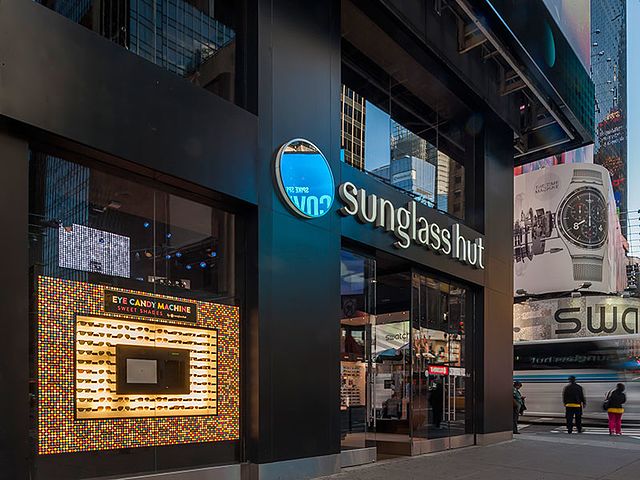We may receive commissions for affiliate links included in this article. This is a sponsored post. Future Sharks makes no warranties about the statements, facts and/or claims made on this article. These are the opinions of the author. Read our advertising and contributor disclosure here. For many years, sunglasses have been a crucial tool for keeping UV rays at bay. Demand for them continues to grow across the globe for that reason, but nowadays, people are looking for more than just sun protection. Today, shades are seen as a modern lifestyle accessory and fashion statement, and more people are searching for a high-quality and stylish pair to elevate their looks quickly and effectively. As such, the sunglasses market is estimated to be valued at $23.32 billion in 2024 and is expected to reach $32.20 billion by 2029, according to Mordor Intelligence. The fashion and function they offer have made them daily essentials for many. Though many eyewear and sunglasses brands have emerged over the decades to attract consumers with an eye for fashion, very few have seen the success of Sunglass Hut. What started as a small business became a huge player in the eyewear industry, and the influence and innovation they pursued have kept them relevant and thriving to this day. Here’s how Sunglass Hut established itself in the sunglasses scene: The history of Sunglass Hut The history of Sunglass Hut Standford Ziff founded the first-ever Sunglass Hut, which opened in 1971 as a kiosk in a Miami mall. The store’s success quickly propelled the opening of more locations, and by 1986, 100 outlets opened. By 1996, Sunglass Hut ventured outside the United States and entered the United Kingdom and Australia. In 2000, the company joined Luxottica and its family of iconic brands, boosting the company even further and shifting its brand identity to focus on fashion. The business expanded to more locations in Europe and Asia, such as India, Spain, China, and Portugal, by 2015. Today, around 3,000 Sunglass Hut outlets are in operation worldwide. Early expansion into e-commerce Early expansion into e-commerce E-commerce has become a booming industry over the past few years, and eyewear is no exception. But while many retailers struggled to develop their online prowess, Sunglass Hut emerged as a pioneer in the scene, launching their e-commerce website in 1998. The company had a headstart in refining its online shopping presence, which helped expand the reach of luxury sunglasses on Sunglass Hut. Shopping for brands like Ray-Ban, Versace, and Persol became easier and more accessible as people could browse the company’s website instead of visiting a store. E-commerce allowed the business to grow beyond its physical locations and reach more people, boosting success. The company has also addressed common limitations of shopping online by offering various digital tools to enhance the experience. The virtual try-on tool allows consumers to use their devices to simulate how the sunglasses will look on their faces, helping minimize returns and refunds by enhancing customer confidence. A focus on the digital and physical A focus on the digital and physical Despite the growth of Sunglass Hut’s online presence, the business didn’t limit innovation and development to e-commerce. Its physical locations are still going strong and bringing in business worldwide. Since it sells luxury and designer shades, it makes sense for stores to also exude luxury. The Sunglass Hut in Sydney’s George Street underwent revamping in late 2023 to provide a welcoming environment with care and attention to detail. This Australian outlet is Sunglass Hut’s biggest location, so ensuring it is taken care of and improved can make an impression on more consumers. Sunglass Hut also hasn’t been skimping out on more digital ventures. The business recently announced a collaboration with the avatar platform Ready Player Me. This first-of-a-kind initiative merges virtual worlds and physical retail, allowing users to equip their virtual avatars with digital sunglasses by visiting Sunglass Hut locations in the US. Users can express their style in the virtual world, improving immersion and personalizing the experience. Adapting to changing demands Adapting to changing demands Sunglass Hut has been steadily improving and expanding its product line, taking note of top fashion trends and consumer demands to offer the most relevant items to customers. One such example is by providing sustainable sunglasses options for eco-conscious consumers. Bio-acetate shades like the EA4176 from Emporio Armani or the Ray-Ban RB4397 Corrigan Bio-Based are made with eco-friendly materials. Offering these options can enhance the company’s appeal as demands for sustainability in business continue to grow. Our “Sustainability Strategies And Benefits For Business Owners” post highlights that sustainability strategies should be ingrained in the business model to make them more impactful and reap more benefits for the company, employees, and the planet. Sunglass Hut’s parent company, Luxottica, is also embarking on a journey to advance sustainability in its retail stores. It’s implementing a three-year plan from 2024 to gradually improve its retail banner spaces, including Sunglass Hut. Sunglass Hut’s journey showcases how taking a chance on innovation, nurturing existing resources, and adapting to change can make for a successful business. Thanks to these smart moves, the company has maintained a top spot in a saturated market and may continue to see more success in the future.
This content was originally published here.



